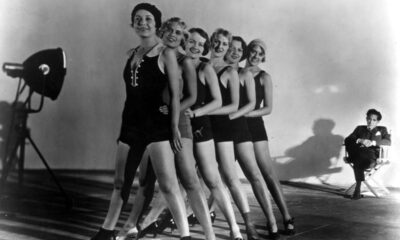All round
Old Hollywood forced actors to take drugs and work long hours
The early days of Hollywood were not as glamorous as people think. Many of the first stars had to work long hours and take amphetamines in exchange for fame.
The early film industry created the concept of the “star system,” a process of discovering, creating and exploiting actors for profit.
Women were particularly affected by the pressures of the industry, with their salaries and bodies tightly regulated.
In the 1920s, major studios sent scouts to find young talent and contract them for years of work.
The studios would also create exciting backstories for the actors, mold their identities into specific roles and even change their names.
Trending:
- Meghan Markle Steals the Spotlight Again: A Royal Engagement Gone Awry
- “Harry and Meghan’s Tense Moment: A Marriage Under Scrutiny”
- Tension Unveiled: Frances Marquez’s Discontent with Meghan Markle in Colombia
- Elton John’s Scathing Remarks Leave Meghan Markle in Tears at Music Awards
- Meghan Markle’s On-Set Outburst: A Diva in Disguise?
For example, MGM held a contest to let the public vote on Joan Crawford’s name.
Judy Garland, who was born Frances Ethel Gumm, changed her name to Judy Garland while touring with her sisters in their vaudeville act. MGM spotted her in 1935 and offered her a contract.
With strict contracts and morality clauses, studio bosses were able to push child stars to work at a breakneck pace.
For example, Garland was only allowed to work six days per week, often with 18-hour shifts of constant singing and dancing, and was given “pep pills” or amphetamines to keep her awake and alert.
To help her sleep, the studios also gave her sleeping pills.
In 1941, at the age of 19, Garland married composer David Rose, but MGM ordered her back to work within 24 hours of the wedding.
The star system also manipulated the actors’ public image. For instance, when Garland gained weight, she was given more speed and the press was told she ate like a truck driver.
Shirley Temple was also a child star who was discovered in 1932 and cast in a series of “Baby Burlesks.”
When she misbehaved, studio employees would lock her in a windowless sound room with nothing but a block of ice to sit on.
She wrote in her autobiography Child Star, “Its lesson of life, however, was profound and unforgettable. Time is money. Wasted time means wasted money means trouble.”
Temple was the most popular movie star in the country from 1935 to 1939, making a staggering 23 films during the Depression.
But after her 1940 film The Blue Bird tanked, Fox dropped her from the studio. Months later, MGM picked her up and on her first visit, producer Arthur Freed exposed himself to her.
Many leading stars were created by the star system, but were dropped when their popularity waned or left them broke.
“After four hours they’d wake us up and give us the pep pills again,” said Garland. “The public wasn’t ready to see her as a mother, a grown-up.”
The star system took away the actors’ freedom to be themselves and shaped them into what the public wanted to see.








































































































